Fun facts about violin echo through the chambers of history since the 16th century, where this beloved string instrument first bowed its strings. Originating from the luthiers of Renaissance Italy, the violin has sung its way through war, peace, and revolution. It’s a testament to human craftsmanship, evolving from the simple fiddles of yore to the complex, sonorous designs we celebrate today.
With over 500 years of history, the violin has stories woven into its wood, from Stradivari’s workshop to a modern symphony’s heart. Let’s pluck the strings of curiosity and explore the harmonious and hidden facets of the violin’s past and present.
1. The Birth of the Violin: Origins in the 16th Century
Born in the workshops of 16th-century Italy, the violin’s first cry echoed against the backdrop of the Renaissance. Cremona, Italy, is often cited as the cradle of this string instrument, with the Amati family, especially Andrea Amati, being credited with its creation around 1555. These early violins were rudimentary compared to today’s standards but were revolutionary, enabling more expressive playing than ever before.
By the 1600s, the violin had solidified its place in music. The craftsmen of the time were not just woodworkers but alchemists of sound, shaping spruce and maple into instruments capable of the deepest grief and the highest joy—a truly fascinating fact about the violin’s history.
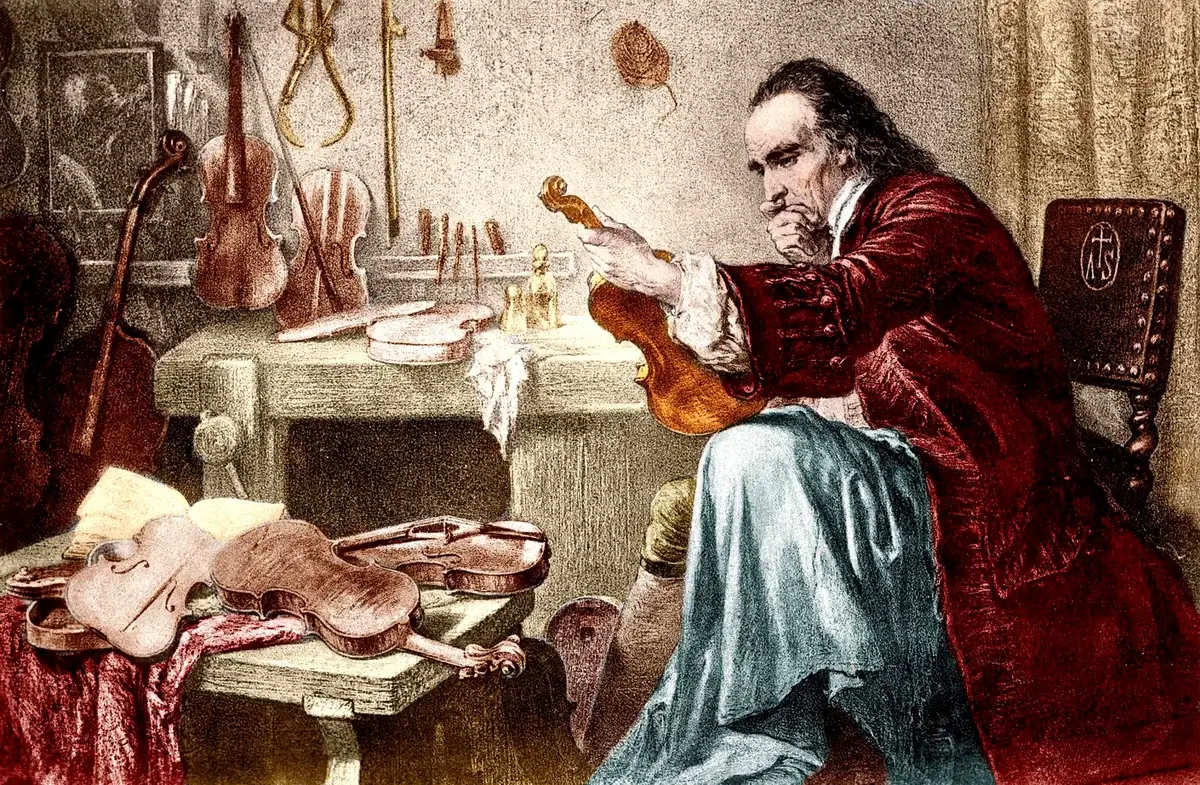
Image: Wikimedia Commons
2. Stradivari’s Legacy: The Golden Age of Violin Making
The name Stradivari is synonymous with violins of unparalleled quality. Antonio Stradivari, who lived from 1644 to 1737, pushed the boundaries of violin craftsmanship during what is often regarded as the golden age of violin making. Stradivari’s violins are praised for their perfect blend of form, function, and acoustics, with the 1715 “Titian” Stradivarius often hailed as his crowning achievement.
These instruments are not just revered for their beauty and sound but also for their history—each carrying stories from royal courts to modern concert halls. Stradivari’s work remains a pinnacle, with his techniques and music influencing luthiers for generations.
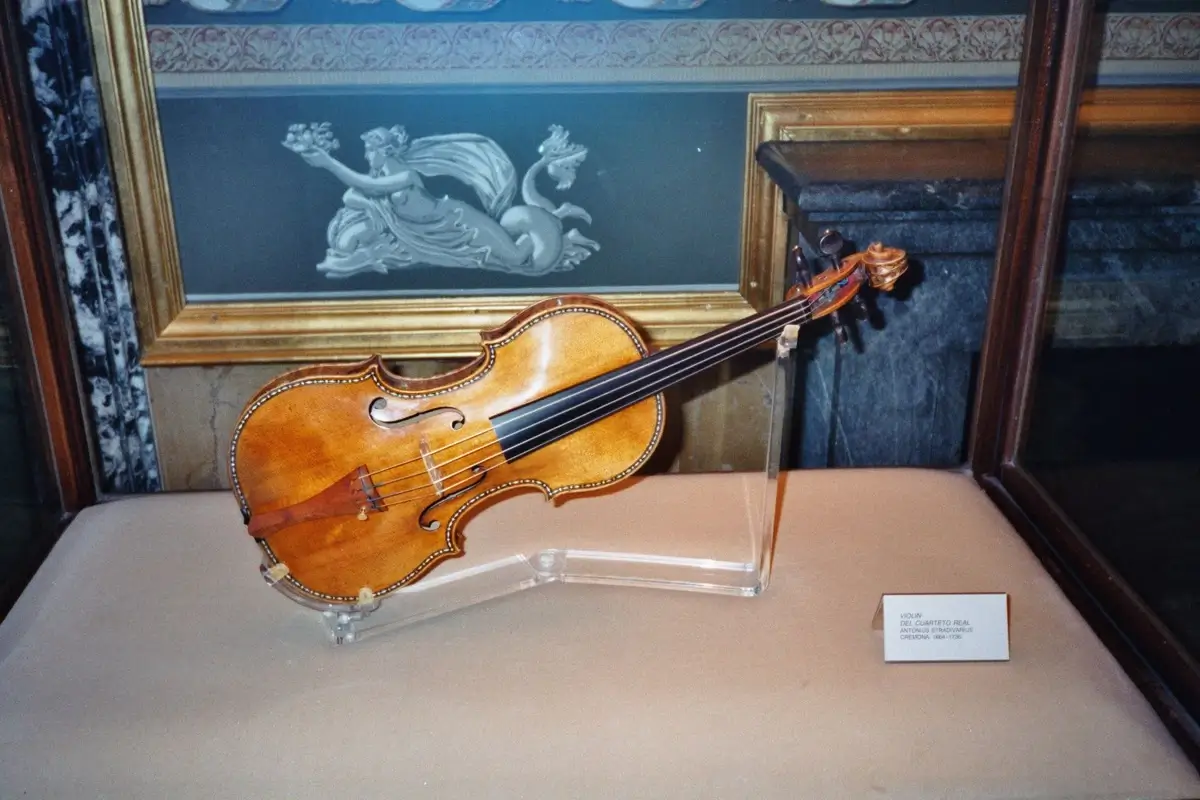
Image: Pinterest
3. The Four-Stringed Wonder: Why Violins Have Four Strings
The violin’s four strings are as much a product of physics as they are of musical necessity. Tuned to G3, D4, A4, and E5, this configuration dates back to the early baroque period when violins began to outshine their stringed predecessors. The choice of four strings allows for a balance of range and playability, enabling both rich harmonies and intricate melodies.
Each string has a specific thickness and tension, contributing to the violin’s dynamic range. The E string, for example, is the thinnest and yields the highest pitch, while the G string offers a deep, warm tone. This clever engineering is a testament to the instrument’s design, perfected over 500 years and allowing for the rich tapestry of sounds that make the violin an enduring icon of music.
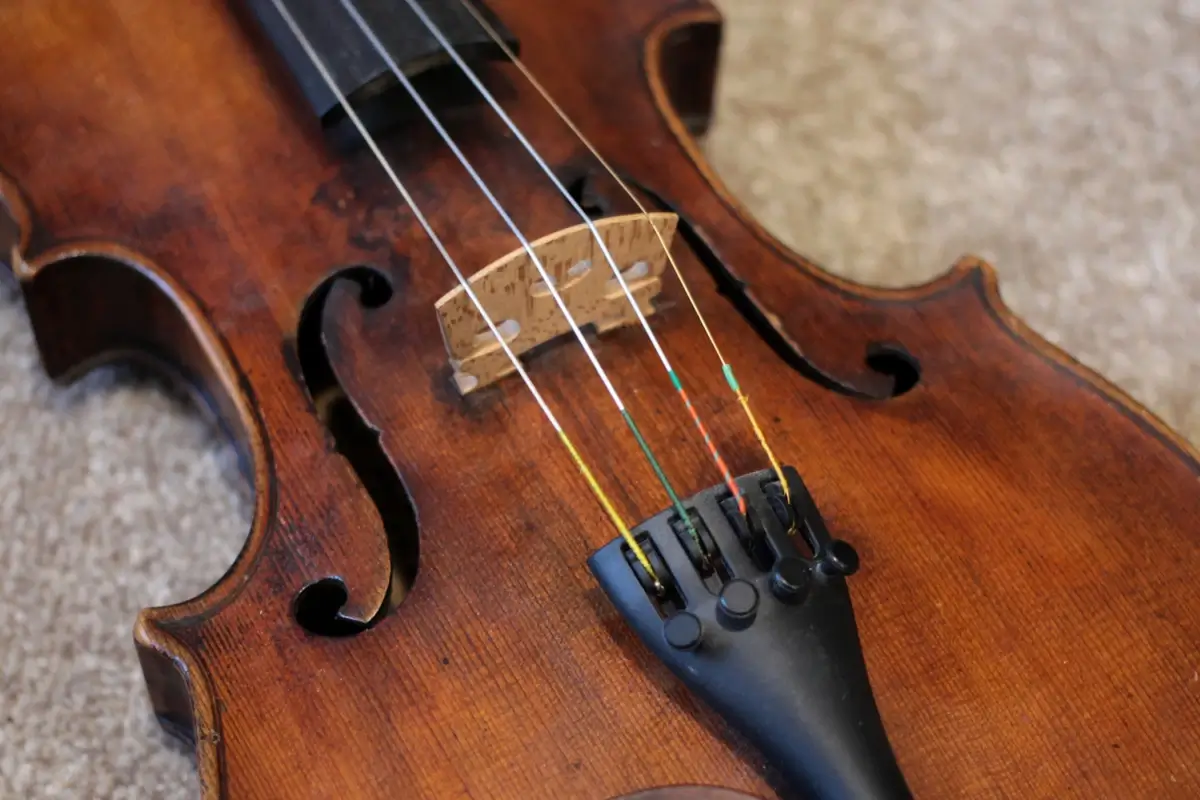
Image: forsyths.co.uk
4. Violin Varnish: The Secret to the Perfect Sound?
The varnish on a violin does more than add a lustrous sheen; it’s believed to be a key component in the instrument’s sound. The fun fact here is that the formula for the ideal violin varnish has been a closely guarded secret among the most renowned violin makers. Historically, varnishes were made from resins and oils, and the precise method of application could affect the wood’s vibrations, thus altering the instrument’s tone.
The debate among luthiers regarding the influence of varnish on sound quality persists. Some claim it protects the wood, while others suggest that it contributes significantly to the violin’s voice, making each instrument as unique as a fingerprint.
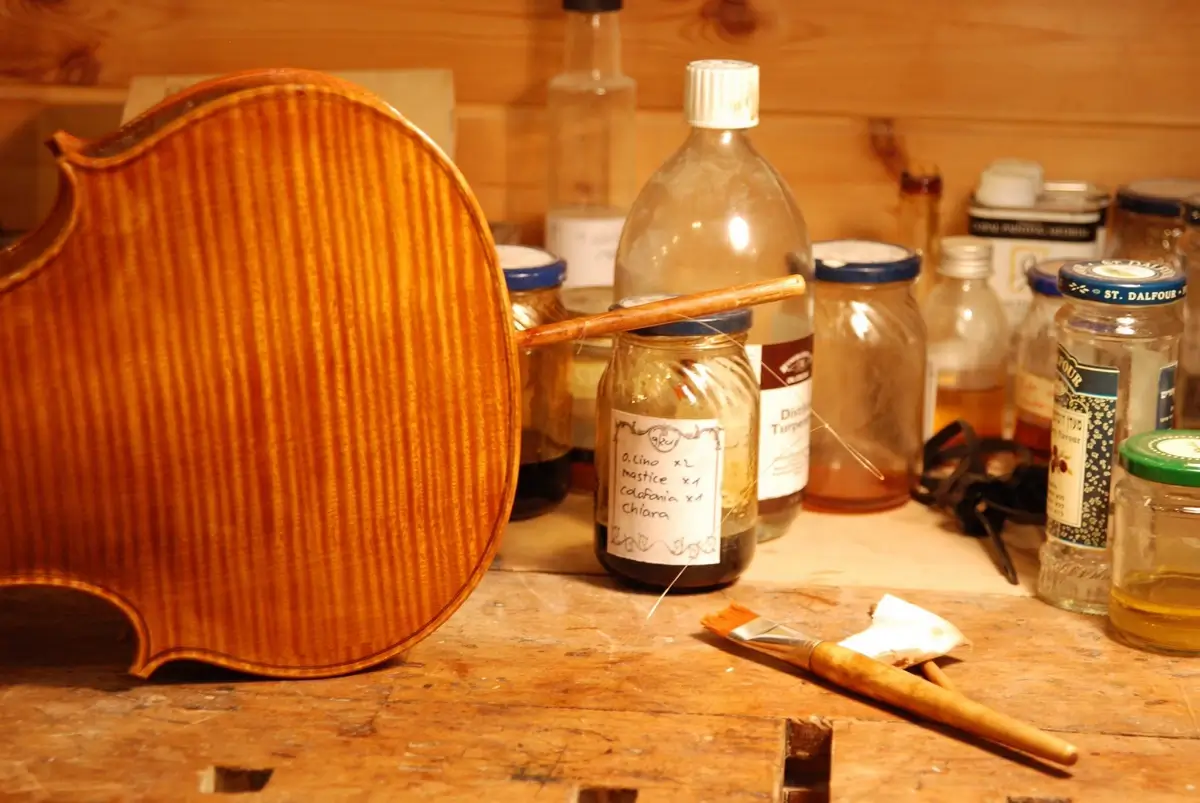
Image: Pinterest
5. The World’s Most Expensive Violin: Priced Like a Picasso
When it comes to price tags, violins can rival fine art. The “Vieuxtemps” Guarneri is the world’s most expensive violin, fetching an estimated $16 million. This interesting fact places the violin in the same league as some of Picasso’s artworks. Created by Giuseppe Guarneri in 1741, this violin has been played by some of the most prestigious violinists, including Yehudi Menuhin and Itzhak Perlman.
Its value lies in its combination of rarity, history, and the unmatched quality of sound—traits that make it as much a collector’s piece as a musician’s treasure. Owning a piece of this history is akin to holding a fragment of music’s soul.

Image: media.npr.org
6. The Violin’s Earthly Symphony: A Cosmic Collaboration
The violin has indeed played a role in a unique cosmic collaboration, but not in orbit. Expedition 39 commander Koichi Wakata, together with students from Pearl Hall Elementary in Pasadena, Texas, participated in a special performance. This event was grounded at NASA’s Johnson Space Center in Houston and featured NASA astronaut Cady Coleman, Houston Symphony violinist Sergei Galperin, and violinist Kenji Williams.
This performance was a testament to the violin’s ability to inspire and educate, bridging the gap between space exploration and musical expression. It highlights the instrument’s capacity to be part of collaborative efforts that reach for the stars while remaining firmly rooted on Earth, bringing together different cultures and disciplines in a celebration of human creativity and ingenuity.
7. Wood Matters: How Tree Age Affects Tone
The wood used to craft a violin is pivotal to its sound. A luthier’s choice typically involves spruce for the top and maple for the back, sides, and neck. The interesting fact is that the age of the wood can significantly affect the violin’s tone. Centuries-old wood is often sought after, as it is believed to create a richer and more resonant sound due to its density and dried resins.
Some luthiers using wood aged for hundreds of years, sourced from trees that grew in cold climates for slow, dense growth. The wood’s age and quality are central to the instrument’s ability to produce the warm, full-bodied sound that violins are known for.

Image: oae.co.uk
8. Famous Lefties: Violinists Who Defy Tradition
Traditionally, the violin is played with the left hand on the fingerboard and the right hand holding the bow. However, a select few violinists have flipped this tradition, playing the violin left-handed. This adaptation requires a mirrored setup of the instrument, from the strings to the bridge angle. Notable left-handed violinists include the 20th-century virtuoso Rudolf Kolisch and contemporary musician David Garrett, who have both showcased that talent and skill can transcend conventional norms.
This departure from the norm not only illustrates the versatility of the instrument but also speaks to the adaptability and innovation of musicians who play it. Their contributions add a unique chapter to the history and music of the violin.
9. Bow Hair: From Horse Tail to Music Maker
The bow, the violin’s partner in producing sound, owes its voice to a surprising source: horsehair. High-quality bows often use hair from the tails of horses, which has just the right combination of strength, flexibility, and responsiveness to draw sound from the strings. The hair, typically from cold-climate breeds, is stretched between the ends of the bow, rosin is applied to create friction, and the result is the bow’s ability to coax music from the strings.
This use of horsehair is a tradition that has endured for centuries and remains largely unchanged, a testament to the natural materials that contribute to the artistry of violin playing.
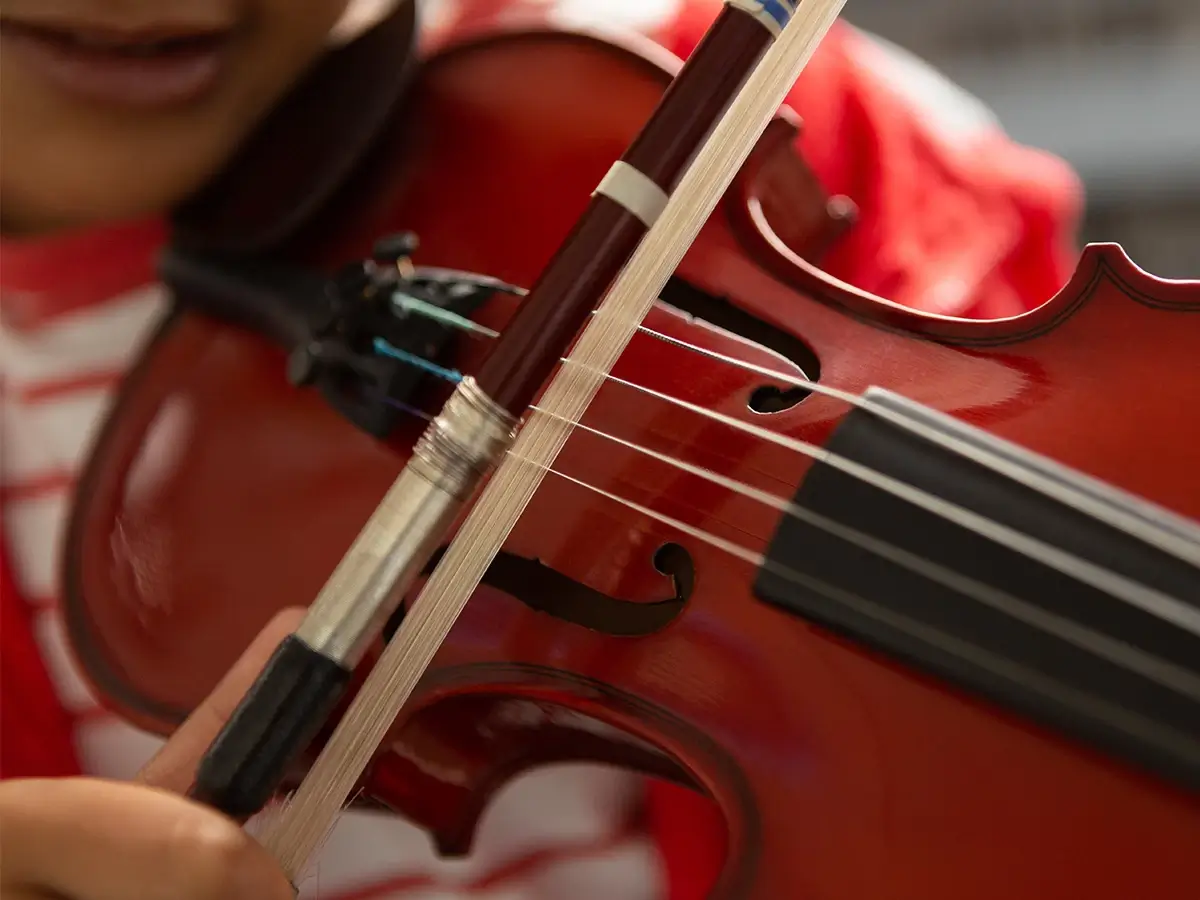
Image: beatsandtunes.com
10. The Smallest of Giants: The Violin’s Place in the Orchestra
In the grand tapestry of an orchestra, the violin may be small, but it is a giant in terms of its contribution to the overall sound. It often leads the ensemble, with the first violins carrying the melody and the second violins providing harmonious support. This role is pivotal in creating the ebb and flow of an orchestral piece, allowing the violin to sing through complex compositions with clarity and emotion.
The violin’s place in the orchestra is not just about prominence but also about versatility, blending seamlessly with woodwinds, brass, and percussion, and leading the charge in the most dramatic crescendos.
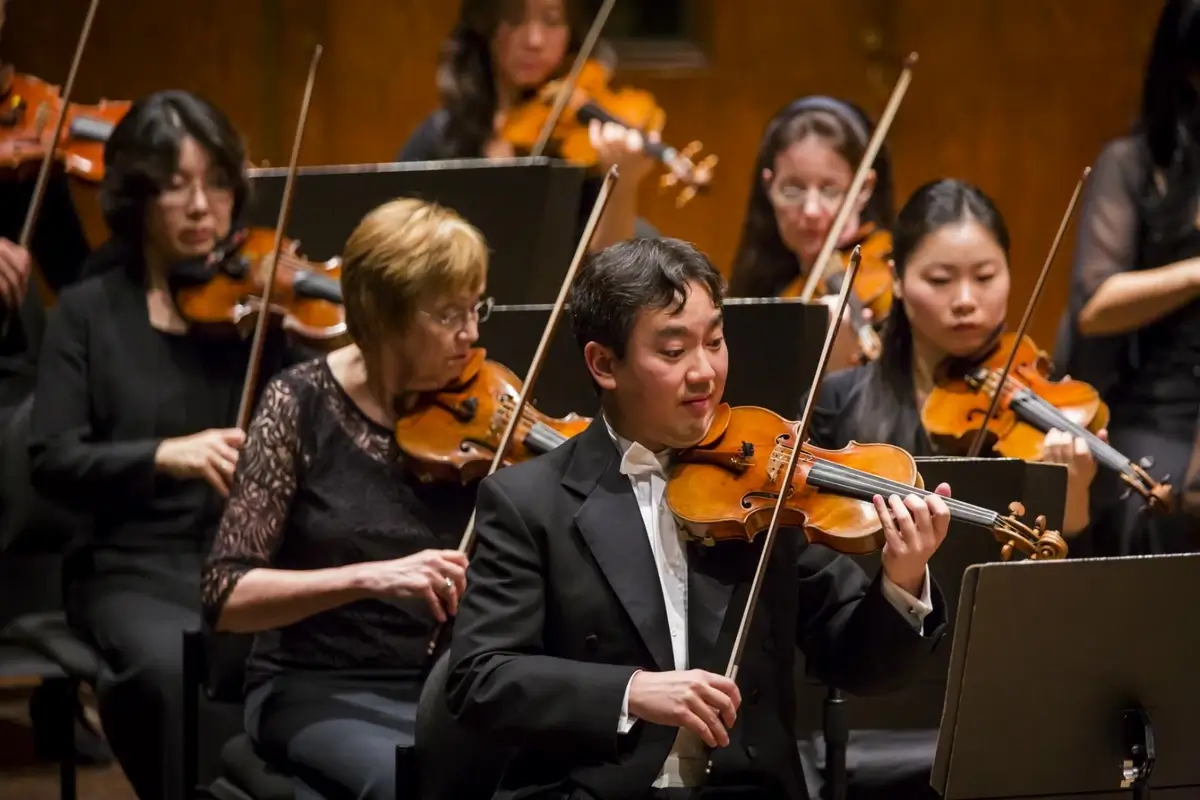
Image: wqxr.org
11. A Cultural Chameleon: The Violin in World Music
The violin may have classical roots, but it has proven to be a cultural chameleon, adapting to various music genres around the globe. It resonates with the flamenco music of Spain, the folk tunes of the American Appalachians, and even the classical Indian music where it is played sitting down with the instrument resting on the player’s foot. This adaptability has made the violin a beloved instrument in many cultures, transcending its European origins.
Its ability to mimic the nuances of the human voice and local instruments has made the violin a bridge between different musical traditions, showcasing its universal appeal and enduring presence in world music.
12. Physics of Fiddling: The Science Behind the Sound
The violin’s sound is a marvel of physics. When a bow strokes the strings, it creates a slip-stick motion, which alternately grips and releases the string, causing it to vibrate. These vibrations transfer to the bridge and subsequently to the body of the violin, where they are amplified within the hollow chamber. The sound then emerges rich and full, a product of precise craftsmanship and the laws of acoustics.
This intricate dance between bow and string, guided by the principles of physics, allows violinists to extract a wide range of dynamics and expressiveness from their instruments, from the softest whisper to the most commanding fortissimo.
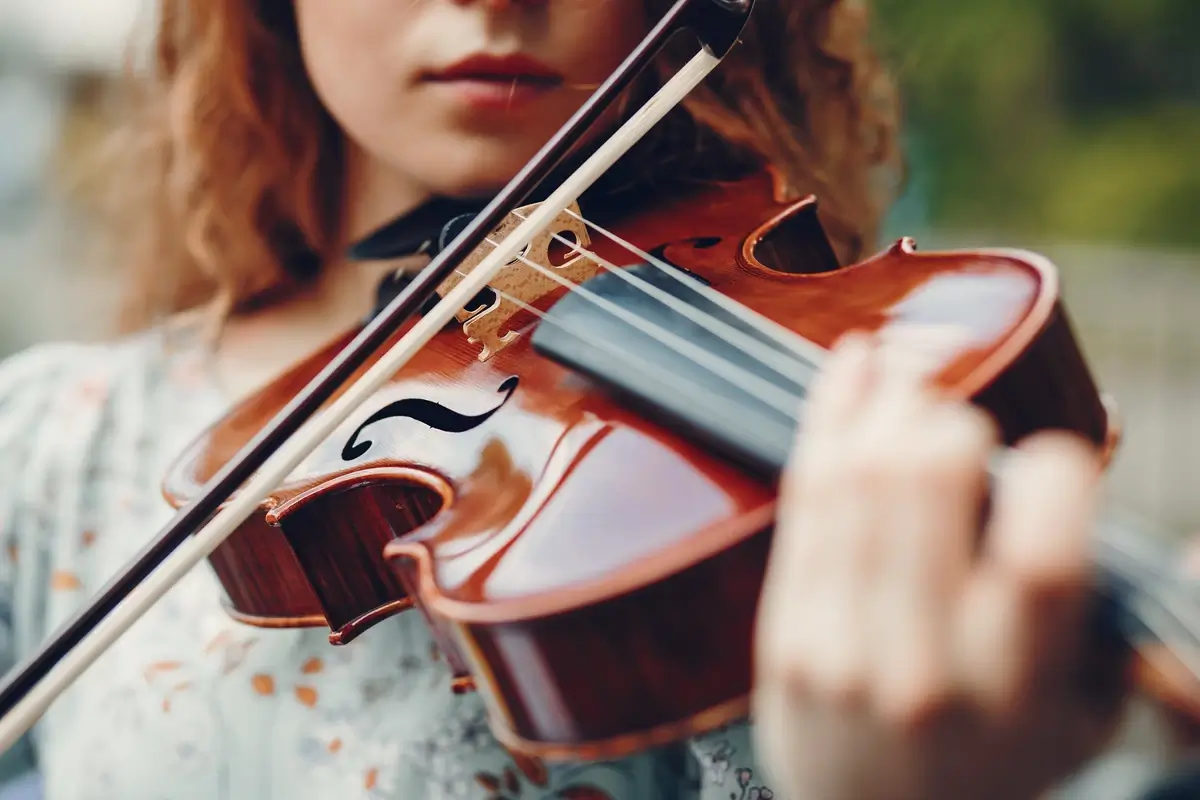
Image by prostooleh / Freepik
13. Violin Strings: A Journey from Gut to Synthetic
Originally, violin strings were made from sheep gut, praised for their warm, rich tone. Over time, musicians sought more durable and consistent options, leading to the development of steel and synthetic strings. Modern strings may use a core of steel, synthetic polymers, or even carbon fiber, each offering different qualities of sound and responsiveness.
This evolution from gut to synthetic materials speaks to the ongoing innovation in violin construction. While purists may still prefer the tonal quality of gut, the newer materials provide stability in pitch and resilience to changing temperatures and humidity, catering to the practical needs of contemporary violinists.
14. The Violin’s Ancestors: From Lyres to Fiddles
The violin’s lineage can be traced back to early stringed instruments like the lyre of ancient Greece and the medieval fiddle. These ancestors shared the violin’s principle of string tension and resonance, but it was in the Renaissance that the violin distinguished itself with its refined shape and sound. The fiddle, with its more rustic and robust design, was a favorite among folk musicians and laid the groundwork for the violin’s more sophisticated silhouette.
Understanding the violin’s ancestry enhances our appreciation for its design and the centuries of musical evolution it represents. It’s a lineage that showcases the human quest for creating beauty in sound and form.
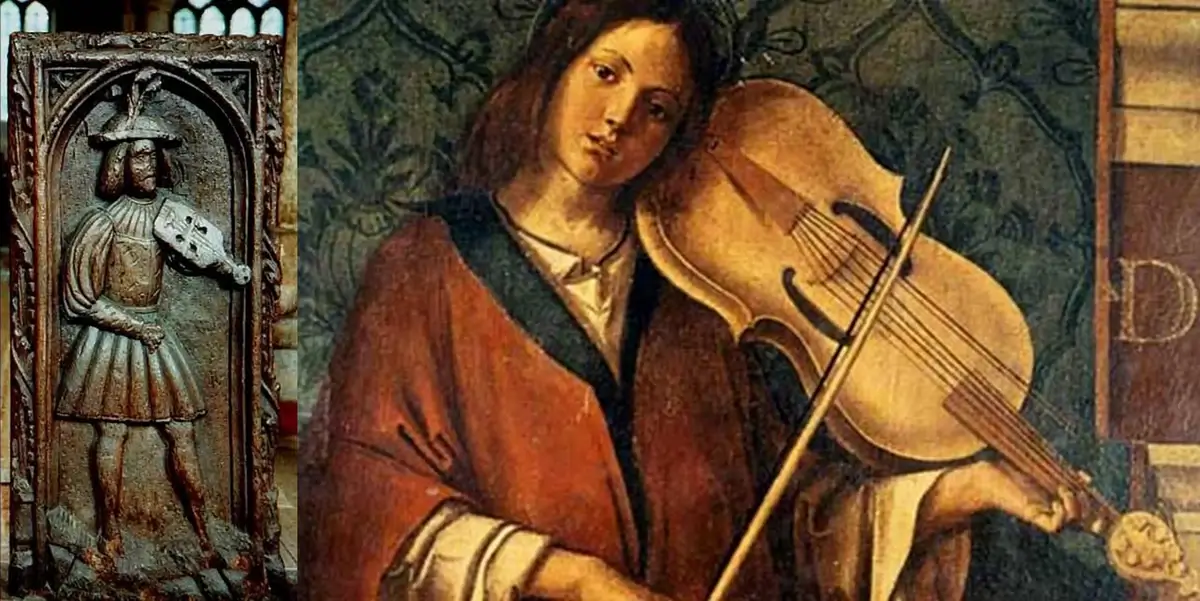
Image: earlymusicmuse.com
15. Chinrest Evolution: A Necessity for Modern Violinists
The chinrest is a relatively modern addition to the violin, introduced by Louis Spohr in the early 19th century to provide greater comfort and stability. Prior to this, violinists would hold the instrument between their shoulder and chin without support, which limited their mobility and comfort. The chinrest allowed for longer playing sessions and more dynamic performance techniques.
The design and materials of chinrests have varied over time, with options available in wood, plastic, and even hypoallergenic materials. This component of the violin may seem minor, but it’s a critical aspect of the instrument’s ergonomics, enabling musicians to perform at their best.

Image: potterviolins.com
16. Child Prodigies: The Young Masters of the Violin
The violin has been the instrument of choice for many child prodigies who have astonished the world with their precocious talent. Historical figures like Mozart and more recent virtuosos such as Midori Gotō began their musical journeys as children, mastering complex compositions with a maturity far beyond their years. These young musicians not only display technical prowess but also an emotional depth that resonates with audiences worldwide, showcasing the violin’s capacity to convey profound expression through its strings.
The stories of these prodigies inspire both awe and admiration, underscoring the violin’s role in the development of extraordinary musical talent from a tender age.
17. The Amati Family: Pioneers Before Stradivari
Before Stradivari, there was the Amati family, whose contributions to violin making were foundational. In the 16th century, Andrea Amati is credited with creating the first instruments of the violin family that resemble the modern violin. His grandchildren, Nicolò and Girolamo Amati, continued to refine the design, setting standards for sound quality and aesthetics that would influence generations of luthiers, including Stradivari himself.
The Amati violins are renowned for their sweet sound and were highly sought after by the nobility of Europe, making them a significant chapter in the instrument’s storied past.

An Amati violin. Image: spillwords.com
18. F-holes: More Than Just a Design
The F-holes on a violin are not merely decorative; they are central to the instrument’s ability to project sound. Shaped through centuries of acoustic research, the F-holes work in conjunction with the violin’s internal air volume and the vibrations of the top plate to enhance the instrument’s resonance and tone. The positioning and size of the F-holes are precise, calculated to optimize the sound frequencies that the violin produces.
This design element is a perfect example of form meeting function, a subtle yet critical aspect of what makes the violin both visually distinctive and sonically powerful.
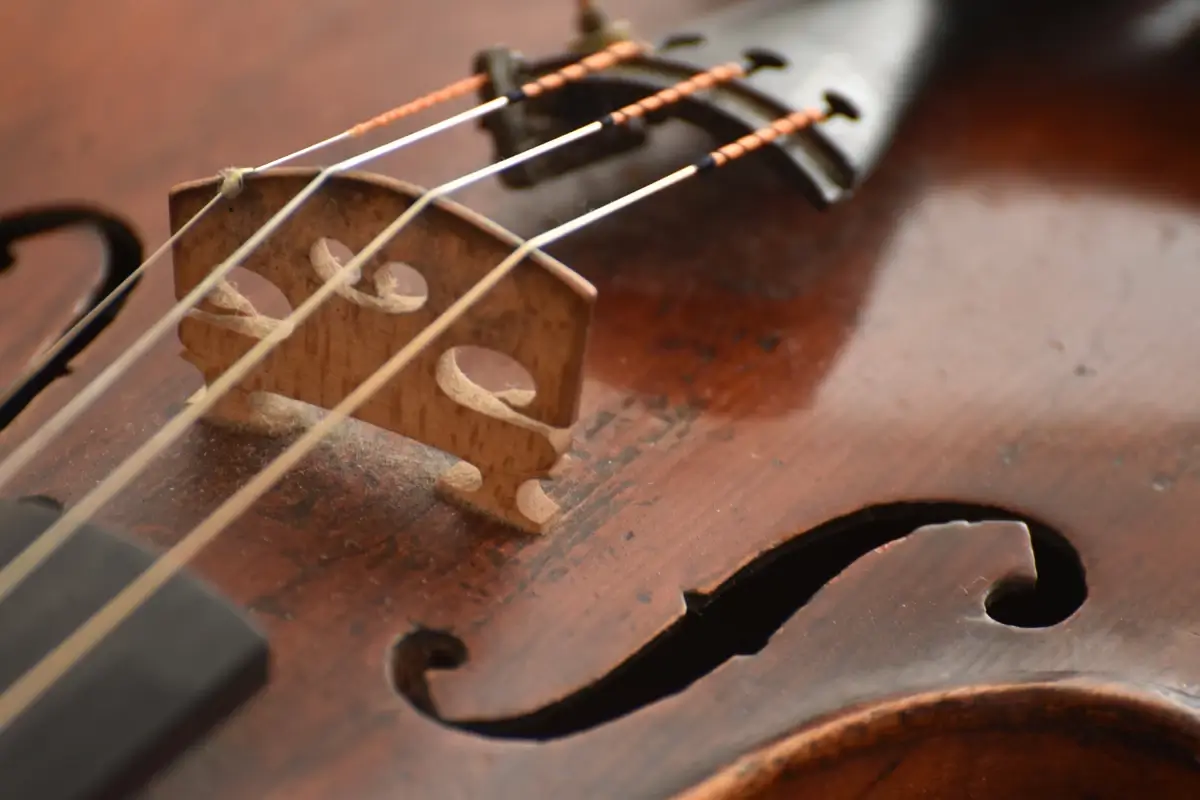
Image: pixy.org
19. Tuning Traditions: How Violins Are Typically Tuned
Violins are typically tuned in perfect fifths, with the notes G3, D4, A4, and E5 forming the basis of this tuning tradition. This method has been the standard for centuries, favored for its balance across the violin’s range and compatibility with ensemble playing. Tuning in fifths allows for a wide array of notes to be played in different positions and facilitates the execution of double stops and chords.
The process of tuning is both an art and a science, requiring a keen ear and an understanding of the violin’s response to tension and pitch. It is a ritual that precedes every practice session and performance, ensuring the violin sings with clarity and harmony.
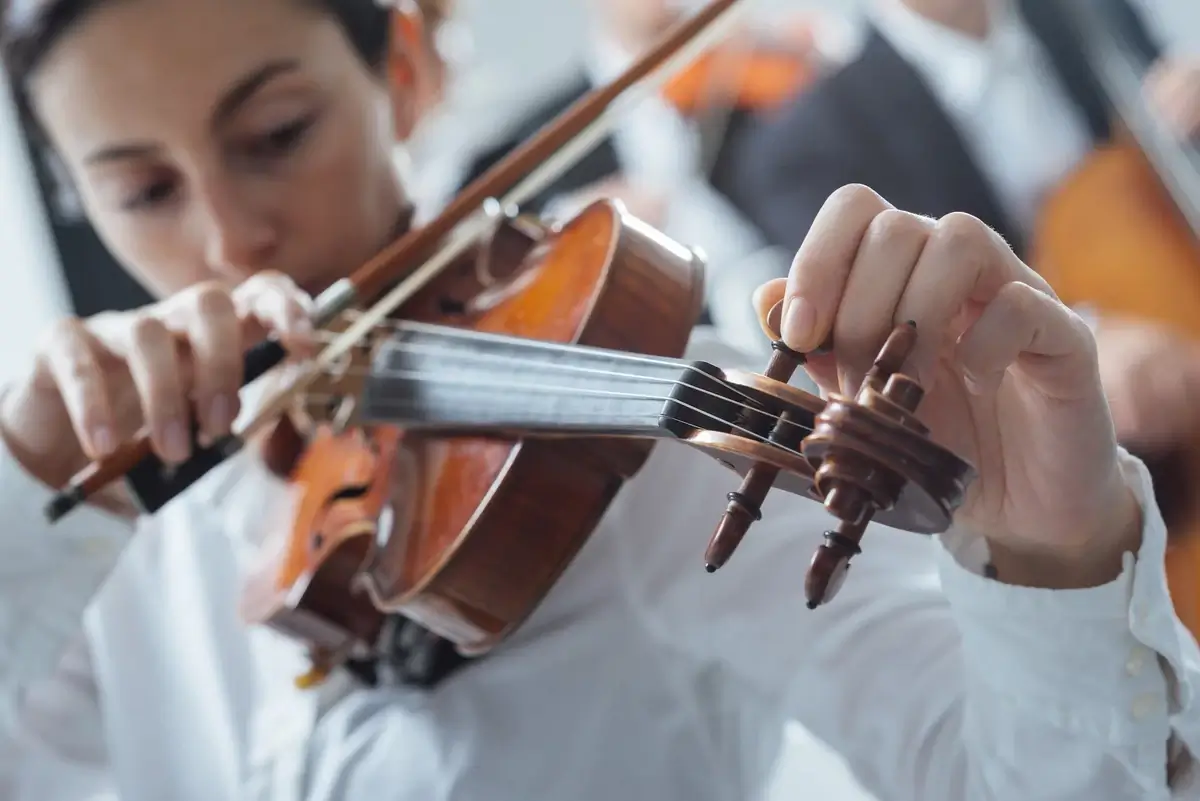
Image: handmadesound.com
20. The Healing Violin: Music Therapy’s Favorite String Instrument
The soothing tones of the violin are not just for concert halls; they also have therapeutic benefits. Music therapy often incorporates the violin due to its wide expressive range, which can mimic the human voice and evoke powerful emotions. The instrument’s capacity to produce both calming and stimulating sounds makes it ideal for interventions aimed at relieving stress, improving mood, and enhancing cognitive function.
The violin’s role in music therapy underscores its adaptability and the profound effect its melodies can have on the human psyche, promoting healing and well-being through its harmonious resonance.

Image: hourdetroit.com
21. Violin in the Digital Age: Electronic Violins
The digital age has seen the violin evolve into its electronic counterpart, expanding the instrument’s sonic possibilities. Electronic violins can mimic the sound of a traditional acoustic violin or explore a vast range of synthesized tones, suitable for genres beyond classical music, such as rock, pop, and electronic dance music. These instruments often feature outputs for amplification and recording, making them a versatile tool for the modern musician.
The electronic violin signifies the instrument’s continuous adaptation to contemporary music scenes, integrating technology without losing the essence of the beloved acoustic original.
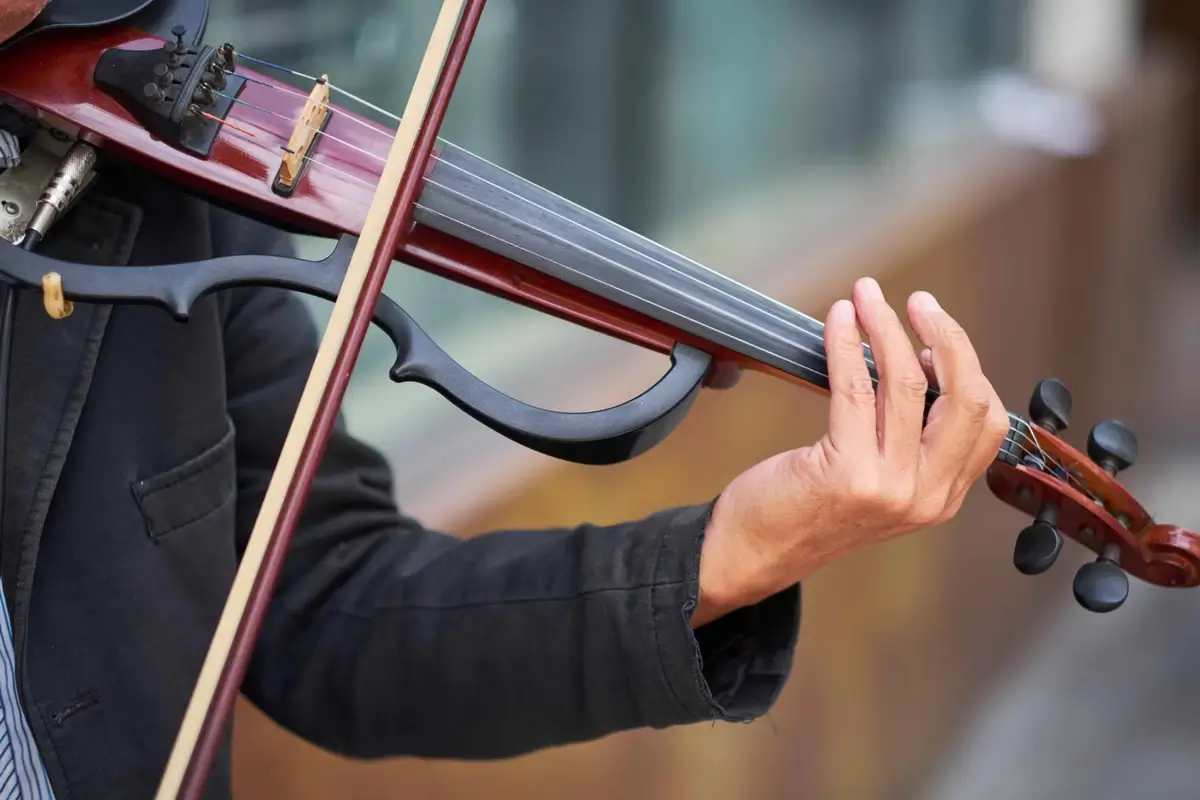
Image: sincable.mx
22. Bowing Techniques: The Art of Expression
The way a violinist wields the bow can breathe life into music, turning notes into a story. The legato stroke, a smooth and connected bowing technique, allows melodies to flow elegantly, often used to convey a sense of calmness or sorrow. In contrast, the staccato technique is like the musical equivalent of punctuation, with short, sharp strokes that inject excitement or tension into a piece. Each technique, meticulously developed over centuries, is a testimony to the violin’s expressive capabilities.
In the 17th century, Arcangelo Corelli’s violin compositions popularized the use of various bowing techniques, setting a precedent for the intricate bow work we see in today’s classical performances. The bow itself has evolved from a simple curved stick to a sophisticated tool capable of a myriad of tonal colors, each technique a chapter in the violin’s rich history of performance.
23. The Symbiotic Relationship of Violin and Dance
Since the baroque period, the violin has been an intrinsic partner to dance. The violin’s ability to produce a rhythmic pulse has made it a driver of dance movements, evident in the works of composers like Johann Strauss II, whose waltzes have swayed countless dancers with their 3/4 timing. The violin not only sets the rhythm but also accentuates the dancers’ emotions with its expressive capabilities.
In the Scottish Highlands, the strathspey, a dance characterized by its stately tempo, owes its unique rhythm to the violin’s bouncy bowing technique known as the ‘Scottish snap’. This relationship between the violin and dance highlights not just a musical connection but also a cultural dialogue that has been ongoing for hundreds of years.

Image: imgur.com
24. Folk Music’s Friend: The Violin’s Role in Traditional Tunes
The violin’s journey into folk music can be traced back to its rustic relative, the fiddle. In the hands of folk musicians, the violin becomes the fiddle, an instrument synonymous with storytelling and community. The fiddle’s distinct sound, with open strings and double stops, gives folk music its characteristic lively bounce. From the lively reels of Ireland to the soulful melodies of the American South, the violin has been a staple in folk traditions for centuries.
In the Appalachian tradition, the fiddle’s prominence dates back to the early 18th century, when settlers from the British Isles brought their music and dances to America. The fiddle was ideal for these communities, portable for social gatherings and loud enough to lead a group. Its role in folk music is as much about entertainment as it is about preserving a cultural legacy through song.
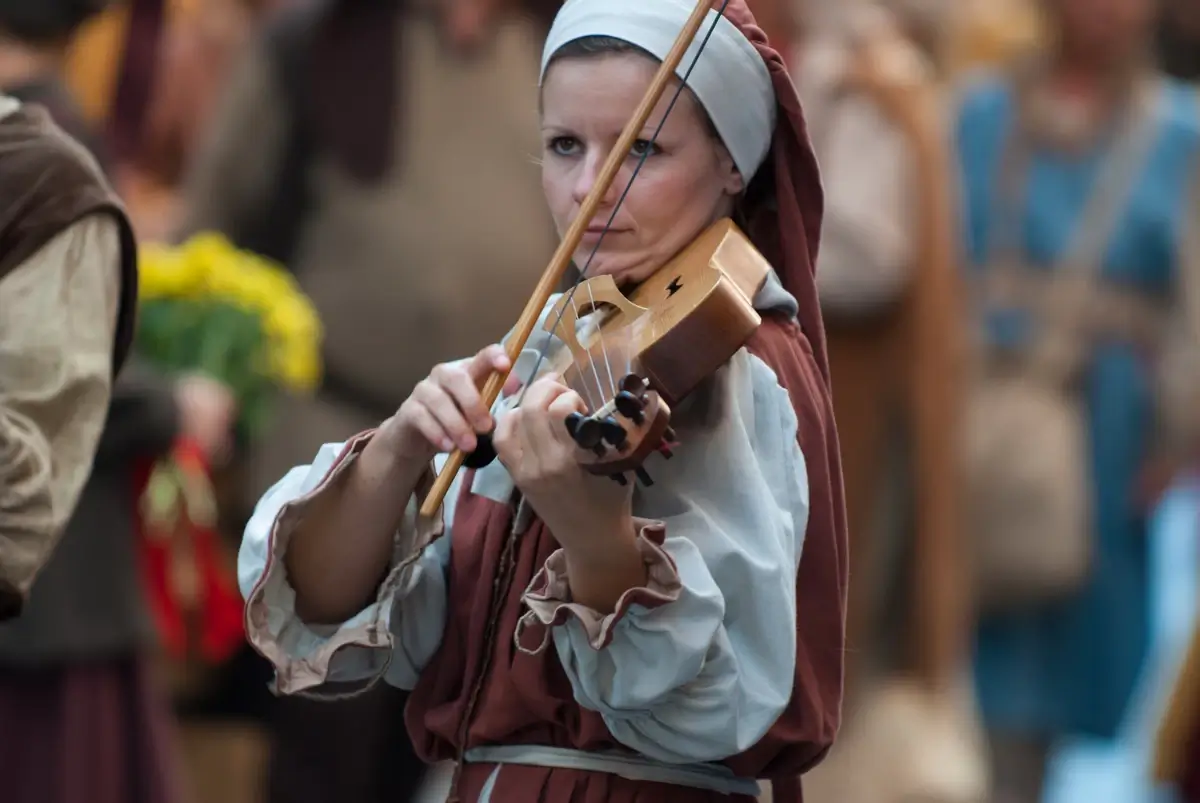
Image: modawyprzedaz.pl
25. Famous Film Scores: The Violin’s Cinematic Magic
The violin has underscored some of cinema’s most unforgettable moments. Its strings have sung the themes of epic narratives and whispered the scores of intimate scenes. John Williams’ haunting solo violin in “Schindler’s List” (1993) is a poignant example, where the violin’s voice carries the weight of history and human emotion. Just as evocative is the violin in Howard Shore’s score for “The Lord of the Rings” trilogy, where it portrays the vastness of Middle-earth and the intimacy of the characters’ journeys.
The use of the violin in film scores dates back to the early days of cinema, where live violinists often accompanied silent films to enhance the storytelling. Today, the violin remains a favorite of composers for its unparalleled ability to convey the depth of human emotion, from joy to despair.
26. The Storied Red Violin: From Film to Real Mystique
The 1998 film “The Red Violin” presents a narrative that, while fictional, is inspired by the real histories of violins traveling through time, accumulating stories. The red color of some historical violins is often attributed to a particular varnish type, with one of the most famous being the “Red Mendelssohn” Stradivarius of 1720, rumored to have inspired the film. This instrument, like many of its kin, has a storied past, having passed through the hands of various owners, each adding to its legend.
The mystique surrounding such instruments is not just due to their color but their survival through tumultuous times and the music they’ve produced, a testament to the violin’s enduring legacy in human culture.
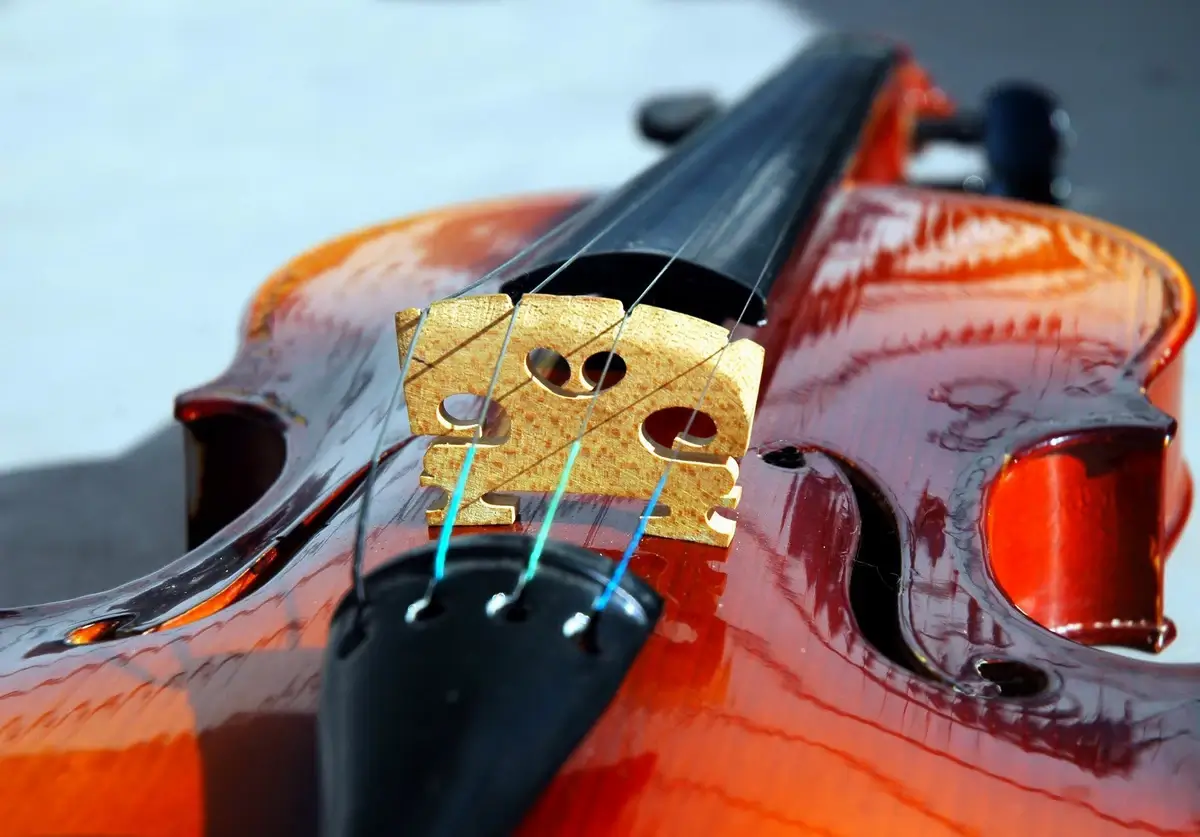
Image: Freeimages
27. Violins of War: Instruments in Times of Conflict
Violins have served as a beacon of hope during times of conflict, offering solace and humanity amidst the chaos of war. The famous “Violins of Hope” are a collection of instruments that were played by Jewish musicians during the Holocaust. These violins have been carefully restored, and they travel the world as symbols of resilience and remembrance. They tell a powerful story of survival and the unyielding human spirit.
The presence of violins in war zones, whether played in bunkers or field hospitals, underscores the instrument’s capacity to provide comfort and connection to beauty, even in the darkest of times.

Image: huffpost.com
28. The Metamorphosis of Violin Design: From Baroque to Modern
The violin has undergone a significant transformation from its baroque origins to the modern form we recognize today. Initially, baroque violins had a shallower neck angle and were strung with gut strings, producing a softer and more intimate sound, suitable for the chambers and halls of the 17th and 18th centuries. In the 19th century, the demands of larger concert halls and the romantic era’s expressive music led to a redesign. Luthiers like François Tourte developed the modern violin bow, which, when combined with metal-wound strings and a steeper neck angle, projected a louder, brighter sound.
This redesign was pivotal for violinists who were looking to push the boundaries of virtuosity and volume. The changes in design enhanced the violin’s range and volume, allowing it to sing over the full orchestras of Beethoven, Brahms, and Wagner. The modern violin, set in its form by the early 19th century, has remained relatively unchanged since, a testament to the effectiveness of its evolved design.
29. The Role of the Violin in Social Movements and Change
Throughout history, the violin has played a role not just in music but in social movements and change. In the 19th and early 20th centuries, the violin was an accessible instrument for the masses, often used to rally people or to provide solace in troubled times. During the Civil Rights Movement, violins accompanied singers who performed songs of hope and resistance. The instrument served as a voice for those who sought change and as a symbol of the peaceful power of music.
In contemporary times, the violin continues to be a beacon in social movements, resonating with the aspirations of people striving for a better world. Violinists have taken to the streets, using their music to break barriers, unite diverse groups, and provide a soundtrack for change, proving the violin’s enduring power as an instrument of the people.

Image: caracaschronicles.com
30. The Violin’s Scientific Symphony: Advanced Acoustic Studies
The violin’s construction is a product of centuries of refinement, and in the realm of science, it is a subject of ongoing acoustic research. Advanced techniques like computed tomography (CT) scanning and 3D modeling allow researchers to analyze the intricacies of historic violins without altering the delicate instruments. Studies focus on understanding the wood’s density, the shape’s impact on sound, and even the vibrations of individual components while being played.
These scientific endeavors deepen our understanding of the violin’s acoustic properties, providing luthiers with data to optimize the instrument’s design for the future. The convergence of science and craftsmanship paves the way for innovations in violin making, ensuring the instrument continues to evolve with the aid of cutting-edge technology.
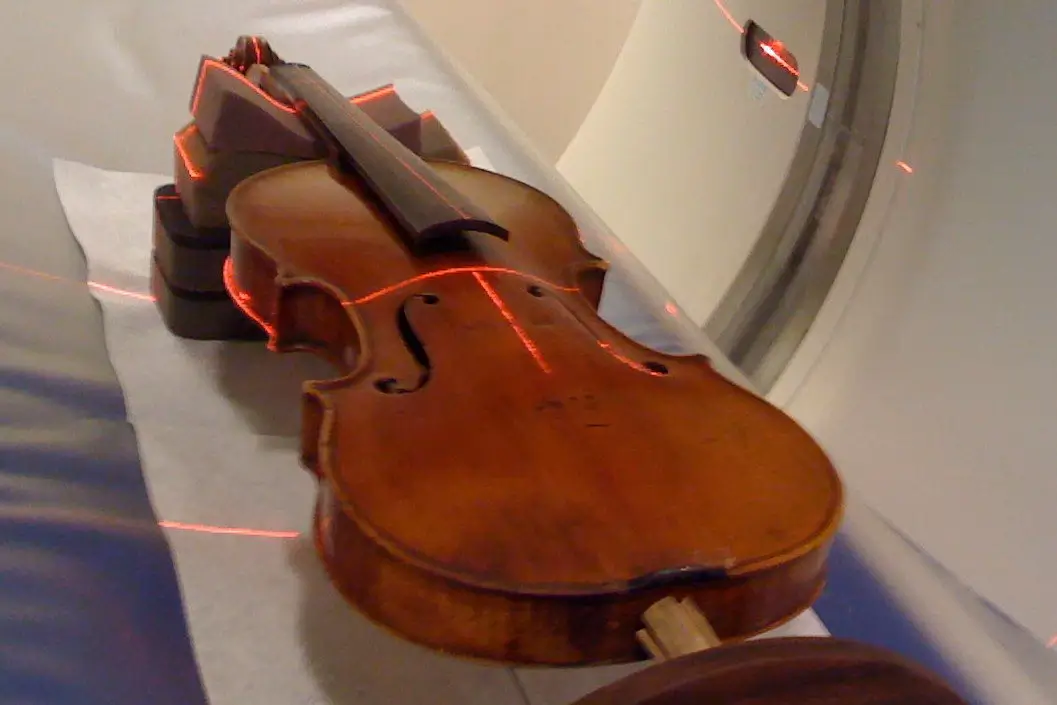
Image: hampel-geigenbau.de
FAQ
Who Invented the Violin?
The violin, as we know it today, evolved from earlier string instruments and does not have a single inventor. However, the first violins showing the features of the modern instrument are attributed to the work of the luthiers of the northern Italian town of Cremona in the early 16th century. Andrea Amati is often credited with making some of the earliest known violins that have survived to this day.
How Old is the Oldest Violin?
The oldest surviving violin, known as ‘Charles IX’, was constructed by Andrea Amati of Cremona, Italy, around 1564. This places the age of the oldest known violin at nearly 460 years old.
Why is the Violin Unique?
The violin is unique for several reasons, including its wide expressive range, the complexity of its sound, and its versatility across various musical genres. Its ability to produce sounds that can be both powerful and delicate makes it a dynamic solo instrument, while its range allows it to blend well in ensembles.
What are Good Things About Violin?
The violin offers numerous benefits: it can improve cognitive and motor skills, it is portable and versatile, and provides a means of emotional expression. It’s also an instrument with a rich repertoire spanning classical, jazz, folk, and contemporary music, making it engaging for listeners and players alike.
How Did the Violin Get Its Name?
The name ‘violin’ comes from the Medieval Latin word ‘vitula,’ meaning stringed instrument. This term may have been derived from the name of the Roman goddess of joy and victory, Vitula, reflecting the instrument’s lively sound.
Can a 70 Year Old Learn to Play the Violin?
Yes, a 70-year-old can learn to play the violin. Learning an instrument like the violin has no age limit and can be beneficial in maintaining mental agility and motor coordination. Adult beginners can achieve a level of proficiency with dedication and practice, much like younger players.
How Much is the Most Expensive Violin?
The most expensive violin in the world is the ‘Vieuxtemps’ Guarneri, which was priced at an estimated $16 million when it was last sold. It was crafted by Giuseppe Guarneri in 1741 and is renowned for its excellent condition and sound.
What are Some Facts About the First Violin?
The first violins were crafted in the early 16th century and featured three strings rather than the four we are accustomed to today. They were smaller and more arched than modern violins, which gave them a quieter sound, and they were used primarily for dance and chamber music.
Why is Violin so Expensive?
Violins can be expensive due to factors like the quality of craftsmanship, the materials used, the instrument’s age and history, and the maker’s reputation. Antique violins by famous luthiers like Stradivari and Guarneri are particularly valuable due to their historical significance and the unparalleled quality of their sound.
Why is Violin the King of Music?
The violin is often referred to as the ‘king of music’ because of its leading role in orchestras and its extensive use across a wide variety of musical genres. Its ability to convey a broad spectrum of emotions and its prominence in musical compositions have cemented its regal status among instruments.







